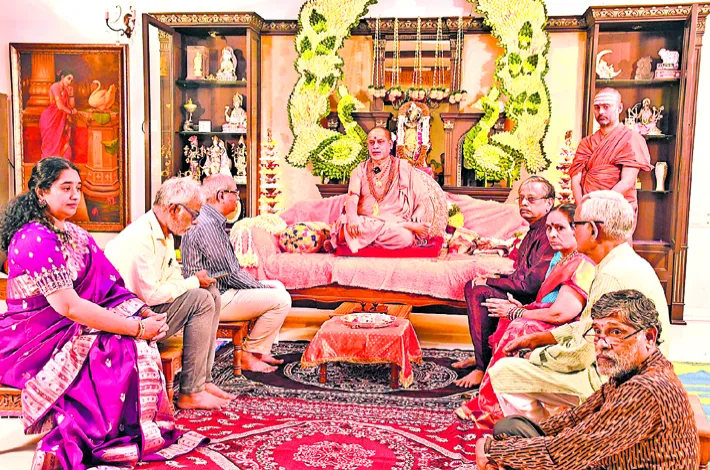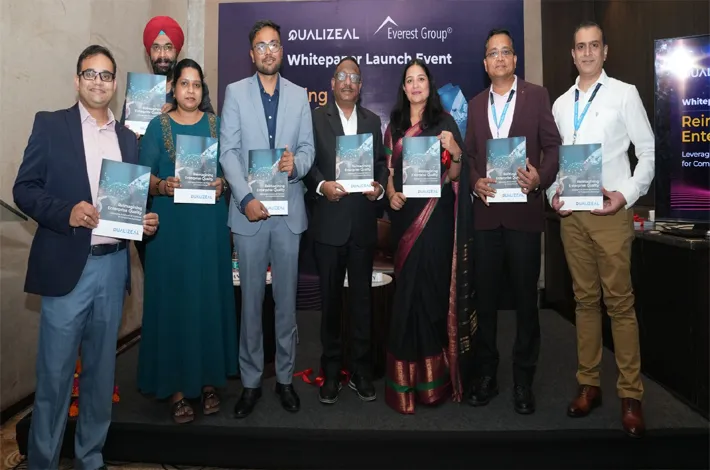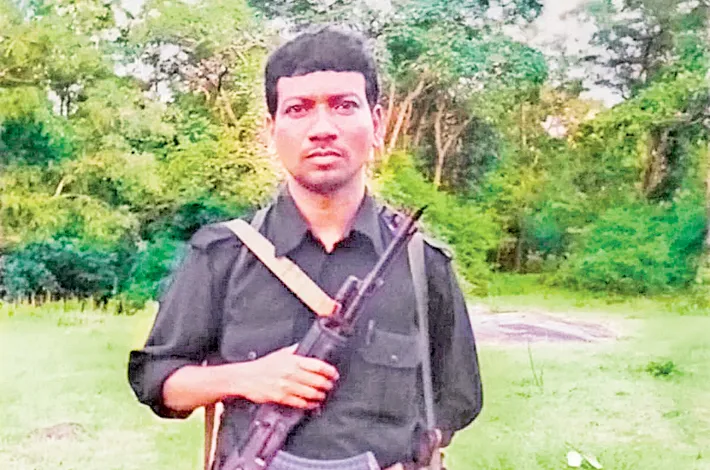Dwarka Peethadheeshwar Desires Hindu Rasthra
02-03-2025 12:00:00 AM

Extensive Preparation Required Before Declaring India a Hindu Rashtra, he says…
metro india news I hyderabad
His Holiness Anantashree Vibhushit, Dwarka Sharada Peethadheeshwar, Sri Sri Jagadguru Shankaracharya Swami Shri Sadanand Saraswati-Ji, shared his views on the prospect of declaring India a Hindu Rashtra.
Speaking informally with Metro India and Vijaya Kranti, the revered spiritual leader emphasized that no political party in India currently possesses the readiness or capability to proclaim the nation as a Hindu Rashtra. However, he quickly clarified that such a declaration cannot be made hastily. According to him, significant groundwork and preparation are essential before India can adopt this identity.
The Shankaracharya stressed the need for a meticulous thought process to integrate the core principles of Sanatana Dharma into the Constitution. This involves defining the essence of Sanatana Dharma and determining how it can be practically incorporated into governance. "A lot of preparatory work must be done," he noted, underscoring that this is not a decision to be taken lightly or rushed into by any political entity.
While he refrained from commenting on specific political parties or leaders, he made it clear that the responsibility of implementing Sanatana Dharma in governance rests with the ruling dispensation, irrespective of which party holds power. What matters, he asserted, is that the governing body adheres to the tenets of Sanatana Dharma.
Unity Among the Four Shankaracharya
When asked why the four Peethadhipathis (heads) of the Shankaracharya Peethams—established by Adi Shankaracharya—do not unite on a single platform alongside organizations striving to re-establish Sanatana Dharma, the Dwarka Peethadheeshwar offered a reassuring perspective. He explained that all four Shankaracharyas are bound by the same principles, traditions, and spiritual outlook.
The four Shankaracharyas share a common philosophy and are connected by a unifying thread," he said. He further noted that they come together when circumstances demand it, such as during the recently concluded Maha Kumbh in Prayagraj, where all four were present. He emphasized that the Shankaracharyas, along with various organizations and institutional heads, share a collective purpose: the preservation and promotion of Sanatana Dharma.
Understanding Sanatana Dharma
Delving into the significance of Sanatana Dharma, the Shankaracharya elaborated on its timeless relevance. He described it as an eternal and indestructible way of life, deeply rooted in the Vedas, Upanishads, and Puranas. Despite centuries of invasions by foreign rulers and influences from other religions, Sanatana Dharma has endured unscathed. "It is eternal and absolute," he said, adding that it is the duty of every Hindu to protect and practice it.
Addressing the destruction of ancient Hindu temples by foreign invaders, he remarked that while physical structures may have been razed, the soul of Sanatana Dharma remained impervious. He countered the critique of idol worship often leveled against Hindus, explaining, "We do not worship the idol itself, but the divine presence within it."
Sanatana Dharma, he said, teaches adherents to recognize God in every creature—be it a human, an animal, or even an ant. "Our traditions urge us to seek atonement even for unintentionally harming the smallest being," he added, highlighting the philosophy’s emphasis on compassion and reverence for all life.
Practicing Sanatana Dharma in Daily Life
When asked how an ordinary person can incorporate Sanatana Dharma into their routine, the Shankaracharya offered simple yet profound guidance. He emphasized that living dharmically requires no extraordinary effort. "Plant a Pipal or Tulsi tree and nurture it. Feed the hungry, assist those in need—these are the basic traits of Sanatana Dharma," he advised.
He encouraged individuals to extend their generosity beyond their immediate circle. For instance, when planning an auspicious ceremony at home, he suggested increasing the budget by ten percent and using the additional amount to help someone in need. Similarly, when purchasing items for oneself or family, he recommended buying an extra one to donate—without expecting recognition or reward. "Give selflessly," he urged, underscoring the importance of altruism without attachment.
A Vision for the Future
The Shankarachrya’s discourse reflects a balanced perspective: while he acknowledges the challenges of declaring India a Hindu Rashtra, he remains focused on the deeper task of preserving and promoting Sanatana Dharma. His call for preparatory work—integrating its principles into governance and society—suggests a long-term vision rather than a reactionary stance. He refrains from entanglement in political debates, directing attention instead to the eternal nature of Dharma and its practical application.
For the Dwarka Peethadheeshwar, Sanatana Dharma is not merely a religious framework but a way of life that fosters unity, compassion, and resilience. Whether through collective efforts of the Shankaracharyas, the participation of youth in rituals, or the everyday acts of kindness he advocates, his message is clear: Sanatana Dharma’s strength lies in its adaptability and enduring relevance. As India navigates its modern identity, his words serve as both a reminder of its spiritual heritage and a roadmap for aligning governance with timeless values.








